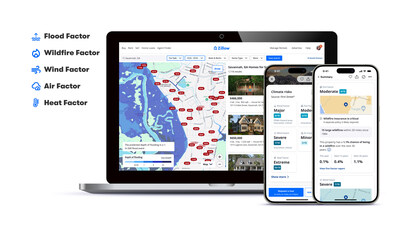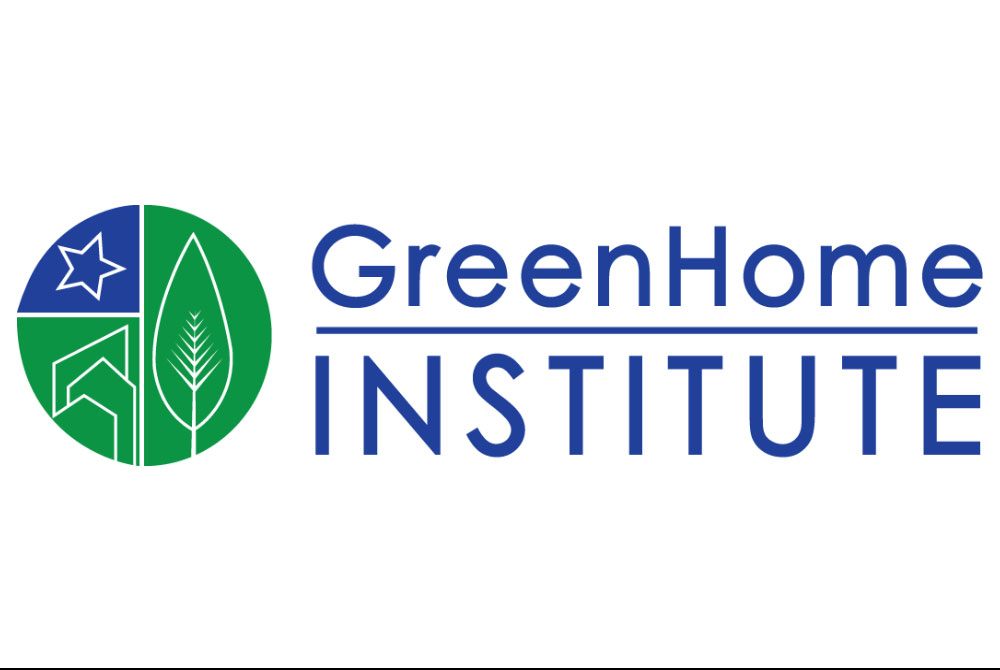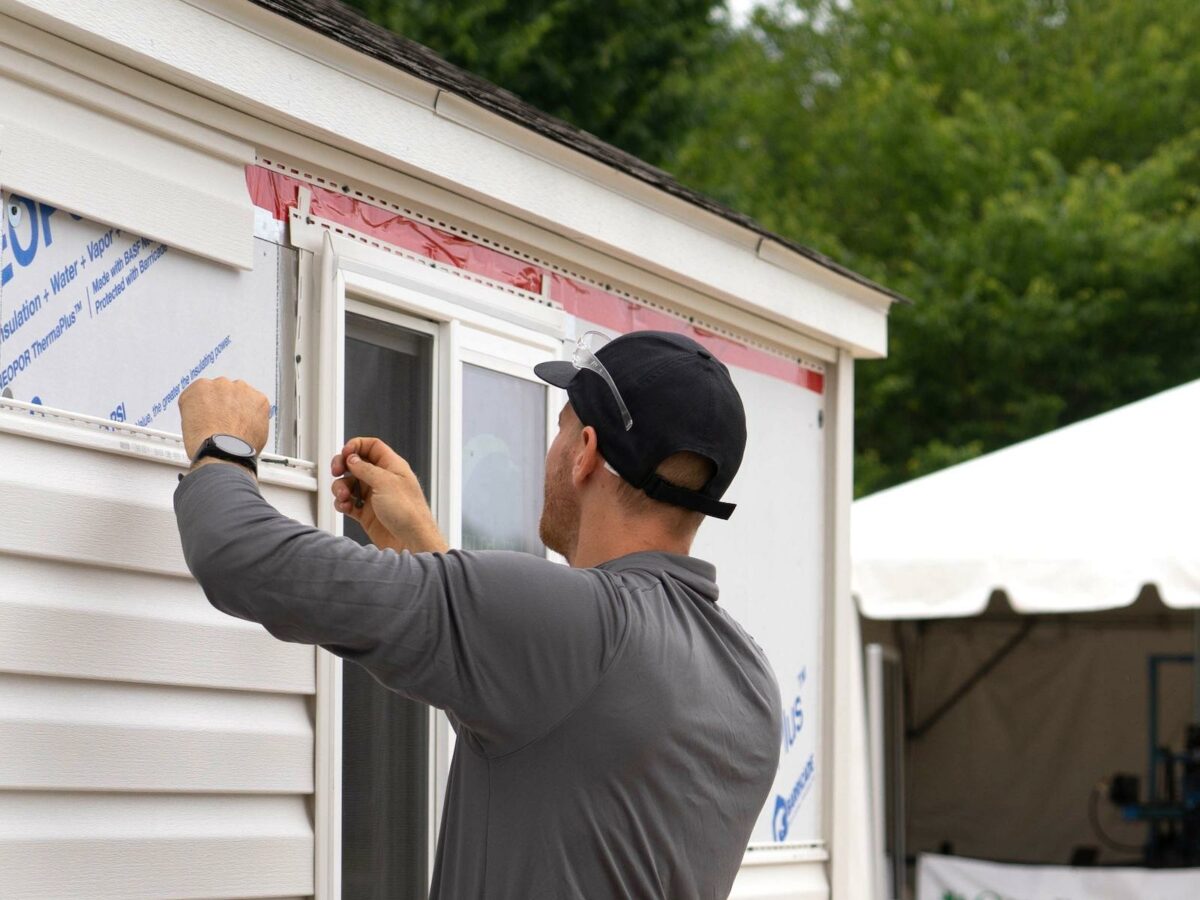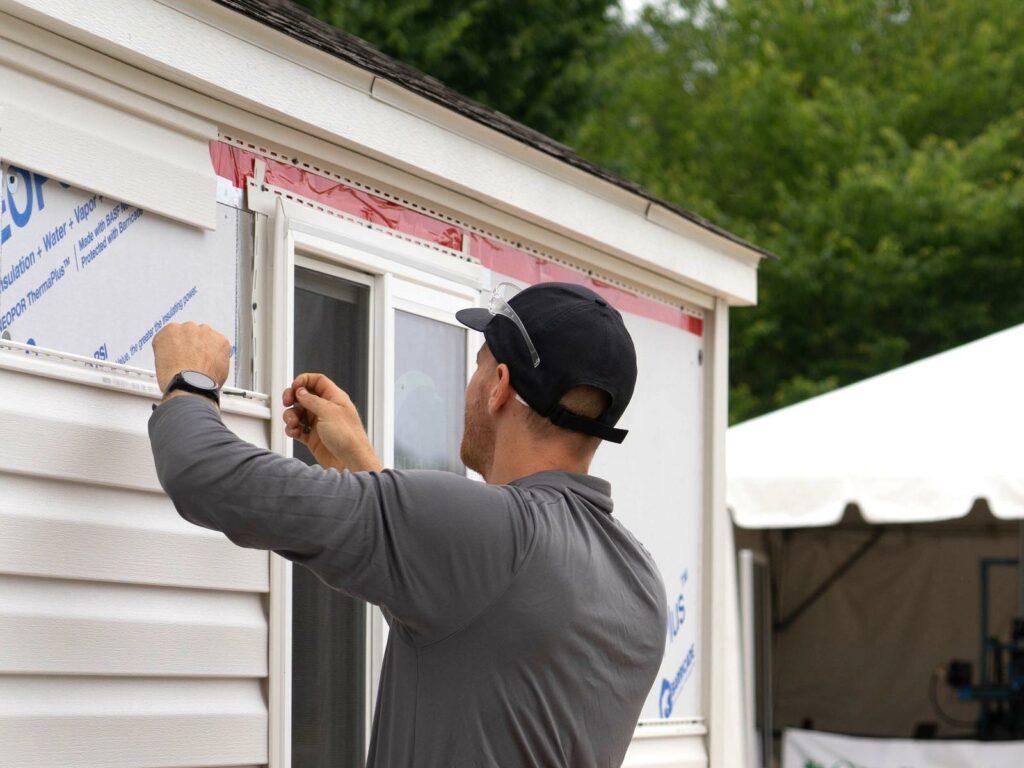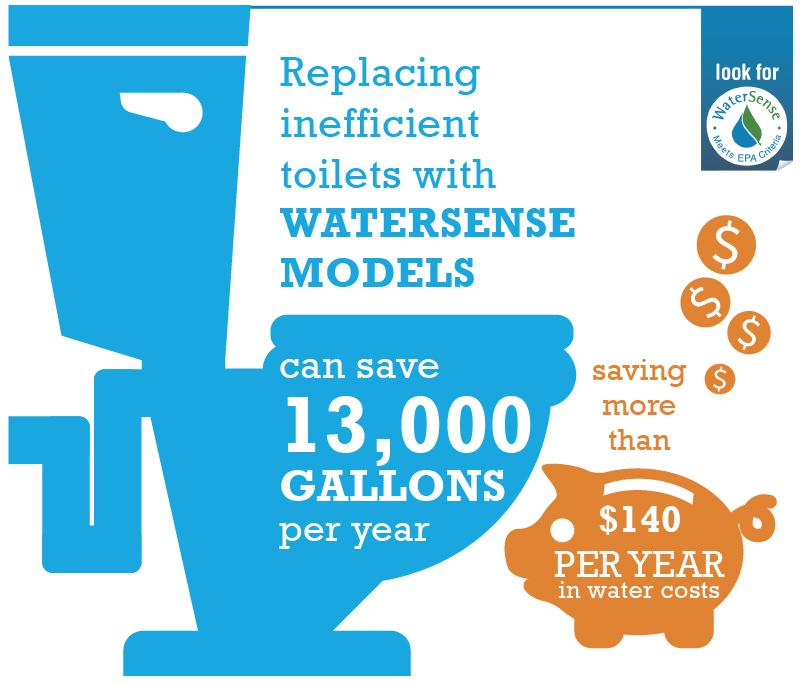What are the biggest
challenges and opportunities to achieve LEED Residential Certification in
existing housing?
In the past, LEED was very difficult to achieve in existing
homes because it required a full gut rehab with all drywall being torn out and exposed,
bathrooms fully gutted, and HVAC systems needing to be fully replaced; however,
this is no longer the case. LEED now requires the home to be brought up with
today’s energy, health, and materials standards to achieve certification. The
program takes a more “if it ain’t broke, don’t fix it approach .” In
many cases, the less you do, the more you score in the LEED rating system,
except for fixing durability issues and improving energy. There are likely 10
out of the 40 points available to certify just by renovating an existing home.
When it comes to existing multifamily buildings, there are even more
exceptions, and there is the LEED operations and maintenance program, which
instead focuses on sustainable metrics and outcomes such as carbon and water use
or reduced mate.
Ultimately, the GreenStar Homes Certification is still a more
appropriate program for existing housing. Enterprise
Green is best for moderate multifamily renovations on tax credit
project work, but LEED is possible.
How?
The ten main tips for doing LEED renovations
·
Meet the Energy Star Homes requirements only
when planning changes to envelope, mechanicals & appliances
·
Energy Rating Index (or HERS) of 85 or lower
·
No ductwork panned in the joist after the
renovation
·
Is the shower and tub backer moisture-resistant?
·
Fix any durability and water entry issues.
·
HVAC systems need to be commissioned and may
need to be right-sized and improved
·
Existing materials that are re-used/refurbished
benefit the project
·
Water heaters, furnaces, and fireplaces be safe
from exposure to combustion
·
Determine existing water flow rates and
landscaping
·
Determine the benefits of your existing location
to the project
In this article here are the LEED credits and
Prerequisites we will cover
1.
P – IN: Preliminary Rating
2.
C – IP: Integrative Process
3.
P – EA: Minumum Energy Performance
4.
R – EQ: Garage Pollutant Protection
5.
C – EA: Annual Energy Use
6.
C – EA: Refrigerant Management
7.
P – MR: Durability Management
8.
P – EQ: Combustion Venting
9.
P – MR: Environmentally Preferable Products
10.
C – WE: Total Water Use
11.
P – EQ: Ventilation
12.
P – EQ: Compartmentalization (attached housing only)
13.
C – RP: Regional Priority
14.
C – LT: Site Selection
The first part of any new LEED project, whether new
construction or renovation, is to assemble your IP Integrative Project team and
complete the required preliminary rating. Planning a LEED for Home renovation
should include an Energy Rater, LEED Green Rater, home inspector, and/or
professional builder to inspect the home or building.
You may also include a mechanical contractor to give
feedback on new or existing HVAC systems, an architect if you plan a major
redesign, and/or a landscape architect if you plan outdoor plantings or
redesign.
While this is a great practice, engaging three practitioners
is also a way to earn the LEED point in this section.
At the very least, minor renovations should include the
general contractor and mechanical and energy rater (building science
background), and major gut renovations/additions should include the design or
architecture.
Sometimes, these professionals, such as the
raters/inspectors, may ideally be the same person. These individual skills
determine the home’s condition and what will be needed to achieve LEED
certification.
Suppose you or the project owner, the client, are already
planning a major gut rehab. In that case, this full onsite review inspection
with a rater may not be necessary because most of the existing structure will
be torn out and replaced, starting from a blank slate. Consider a designer or
architect instead.
Upon reviewing the structure and systems, these
professionals may determine that a total gut is required to make the home safe,
healthy, energy-efficient, and qualify for LEED. This process will determine
whether you must deconstruct the entire building and build a new LEED-certified
home. Each home is case by case.
What version of LEED do I use?
Renovations do not work well under traditional LEED v4 for 1
– 4 unit buildings or townhomes.
Instead, use v4.1 residential, and for multifamily, use the
v4.1 credit swaps under v4 in the US and Canada. Outside North America, use the
Multifamily v4.1 BD+C.
For buildings not planning major multifamily upgrades, consider
using the LEED operations and maintenance or LEED (OM) programs. These programs
focus more on performance outcomes such as carbon emissions, water use
reduction, and other sustainability metrics rather than mechanical and shell
improvements. However, to achieve those outcomes, you may need to make upgrades
called for in LEED for homes.
Let’s look at each section that both makes LEED a
challenge and always makes LEED easier on existing homes.
The Energy Star Homes program is an ideal goal for all major
renovation projects to strive for, but it can be very difficult to meet if
there is no plan or budget to change certain home features. Reviewing the Energy Star thermal enclosure checklist,
here are the exceptions granted
1.
“High-Performance Fenestration not required for
existing windows that are not being replaced
2.
High-Performance Insulation not required for
existing walls that aren’t impacted by the renovation.
3.
Slab insulation is strongly encouraged but not
required to meet or exceed 2009 IECC levels.
4.
Attic insulation at the intersection of existing
roof and existing exterior walls does not have to meet R-value requirements.
5.
Advanced framing is not required on existing framed
walls,
6.
For insulated ceilings with attic space above (i.e.,
non-cathedralized), Grade I insulation extends to the inside face of the
exterior wall below and is ≥ R-21 in CZ 1-5; ≥ R-30 in CZ 6-8.
7.
Air Barrier is needed except for Existing sill
plates on top of concrete are not required to be placed on a foam gasket.”
Review technical details here
https://basc.pnnl.gov/checklists/energy-star-single-family-new-homes-version-331-revision-11
Insulate and airseal rim band joists
Garage Pollution Protection can be done while creating
your air barrier.
Place all air-handling equipment and ductwork outside the
fire-rated envelope of the garage. Tightly seal shared surfaces between the
garage and conditioned spaces, including all of the following:
·
In conditioned spaces above the garage, seal all
penetrations and all connecting floor and ceiling joist bays.
·
In conditioned spaces next to the garage,
weather-strip all doors, install carbon monoxide detectors in rooms that share
a door with the garage, seal all penetrations, and seal all cracks at the base
of the walls.
Put together an air seal and insulation plan with your
contractor and submit it to your LEED provider to ensure it is sufficient. This
is mandatory for all multifamily buildings, no matter what.
What do I do with Mechanical and HVAC?
The next biggest barrier to achieving LEED in older homes is
an energy-efficient, properly functioning, and commissioned HVAC and mechanical
system. This includes proper sizing, proper functions, proper air filtration,
and well-sealed ductwork to deliver air.
One of the biggest HVAC barriers to achieving LEED for Homes
in older homes is ensuring no panned ductwork in the floor or wall joists.
Ensuring this does not happen improves the Energy Rating Index or (HERS) score.
Any existing home that is found to have this ductwork panned anywhere on the
floors, walls, or attic must have it all removed and re-ducted. This may
require the drywall to be torn out and redone, which can be costly.
Another option is to use the existing ductwork for a
ventilation system, which negates the need to have it fully ducted, though it
is still recommended. Then, consider radiant or ductless mini splits for
heating and Cooling.
*Note that getting a mini split might not resolve humidity
issues either, so there are bonus credits in v4.1 Residentials for products
like dehumidification or ventilating dehumidifiers. These will reduce the
humidity issues that are not resolved by mini splits. Also, existing homes
suffer more from humidity issues than new homes.
If the system must be replaced with a new ducted HVAC
system, it must be correctly sized. This is a good way to seal the ductwork;
this can be done as the ducts are being rebuilt if they were panned in the
joists; some technologies seal existing ductwork from the inside. If the filter
box is one inch, you can add a MERV 8 filter or higher (10 for additional
points), but the static pressure of the system will need to be checked;
otherwise, if getting a new HVAC, consider adding a 4-inch filter to reduce
static pressure and improve system performance. Getting a new HVAC will also
help you get a better energy rating, and many Inflation Reduction Act tax
credits help with this in the US. Consider a heat pump to get the funding and
achieve the best energy rating with lower utility bills in many cases.
In summary, commissioned, right-size HVAC systems with
reduced duct leakage and good filtration are important. During the LEED
preliminary rating, the HVAC contractor can measure the size of the current
system and complete the HVAC design report relevant to the planned home energy
upgrades to determine if it is oversized using the Energy Star guidance.
What about making homes more durable?
The next barrier is the durability or water intrusion
management of the building envelope, interior, and behind the shower and tub
surround. Every home will be different in terms of how much effort, cost, and
time it will take to address these issues. By repairing these issues, you can
increase the home’s life, reduce rot, and improve health by removing mold and
mildew risk. Fixing some of these items can go hand in hand with Energy Star’s
thermal enclosure opportunities by providing more energy-efficient systems.
For older housing stock, the biggest opportunity in this
section of LEED for Homes is ensuring the exterior water management (aka
durability or bulk water entry) items are in good shape. This is done through
an assessment of the property, typically done by a home inspector or general
contractor, to determine if deficiencies in the roof, walls, windows, or slab
may cause water entry. Proper flashing, roofing in good shape, rotting walls,
use of gutters and downspouts to direct water away from the home, proper
grading, sealed sump pump, and proper water management at the foundation walls
and slab are all required to be remediated if there is an issue. Review the
Energy Star water management checklist and have a professional inspection done
on the home to review all the items on the checklist thoroughly. Fix any items
with deficits and document the corrections with photos and notes.
Specifically, here are the items that can be ignored in the
water management checklist
“1.3. A capillary break under an existing slab is
not required unless there are visible signs of moisture damage on the slab
floor.
1.5. Exterior below-grade walls are not required to be
damp-proofed on the exterior surface unless there are visible signs of moisture
damage on the interior of the wall.
1.8 Drain tiles surrounded with clean gravel and fabric
filter are not required for existing slabs, unless there are visible signs of
moisture damage on the slab floor
2.3. Water-managed wall and roof assembly requirements
are not required for existing walls or roofing unless there are signs of
moisture damage related to vulnerabilities in the walls or roof.”
Unlike exterior issues, interior issues must be addressed
whether or not there is an issue. Heading inside, we have multiple water
durability issues, but the biggest barrier to LEED for Homes inside here is
ensuring all bathrooms either have a nonpaperface ASTM-certified
moisture-resistant wall backer behind the shower and tub OR a single fiberglass
insert that is properly sealed to the wall. If you are unsure, you will need to
inspect behind the surround, and if you see drywall behind it, it is likely not
ASTM-certified. Getting LEED certification for the project could be easier if
the original workscope or budget did not call for a shower replacement. It may
be part of a phase or planned approach.
Additional water interior durability issues have likely been
updated or repaired over time in most homes. Still, they may not have been, so
these items must be assessed to determine whether they need fixing or
repairing.
1.
Use water-resistant flooring for the kitchen, bathroom,
laundry room, and spa area; do not install carpet.
2.
Entryway within 3 feet (900 mm) of exterior door
accessible from the ground – Use water-resistant flooring; do not install
carpet (carpet tiles are permitted). Watch out for slider doors, as these count
as entrances and should not have carpeting. Carpeting may need to be torn out
of the home for this credit.
3.
The tank water heater in or over the living space needs
a drain pan.
4.
Clothes Washers need a stainless steel braided hose OR
drain pan or automatic water shut-off or flow restrictor, or floor drain with
floor sloped to drain.
5.
Conventional clothes dryer, Exhaust directly to
outdoors (consider condensing heat pump dryer)
6.
After any water systems upgrades are completed,
plumbing systems for buildings and irrigation must be tested to verify no
detectable water leaks. If plumbing system changes are not part of the plan, we
recommend testing leaks during the initial building assessment to make them
part of the repair plan.
You made it tight and now you need to ventilate it right.
All LEED-certified homes must have proper ventilation. Work
with the rater to inspect the existing ventilation systems; this includes
testing kitchen hood ranges, bath fans, and supply systems if those are being
used for whole-home ventilation. The biggest issue is the kitchen hood range.
At the very least, the kitchen hood range must be vented and ducted to the
exterior and must pull at least 100 cfm with testing. If the system is not
ducted, a kitchen makeover may be required to place the stove in a location
allowing the kitchen to vent outdoors. Then, you need to ensure proper flashing
and sealing of the vent penetration. You could test the bath fans to see if
they pull 50 CFM or more, but before you do, just check if it is Energy Star
and meets the quiet rating standards (SONE) because even if it pulls 50 or more
if it is not certified, you will need to update all the fans. Fans must also be
fully vented outside the house and not into the attic. This will need to be
part of the mechanical plan. The entire home must comply with home ventilation
standards. Thus, this can be done through constantly running bath fans,
supplying air in the HVAC, or, ideally, an energy or heat recovery ventilator
system. Use the AHSREA 62.2 2016 or 2010 table to determine the flow rate
based on the number of bedrooms and the house size.
Continuing in the Indoor Environmental Quality Section (EQ),
any existing water heaters, furnaces, and/or fireplaces must be replaced if
there is a chance of exposure to combustion. For example, this is usually an
issue with older methane or propane gas-fired water heaters without sealed
combustion. By upgrading to sealed combustion, electric, or ideally heat pump
water heater, you will gain improved energy points AND make your home meet the
LEED Environmental Quality standards. Older gas furnaces that are not sealed
are rare but do exist and must be replaced with sealed combustion or, ideally,
heat pump technology for a better energy rating. Existing fireplaces that are
not sealed can be repaired in some cases; otherwise, they need to be replaced
with an EPA-approved model or removed entirely. Removing fireplaces is usually
the safest bet and can reduce air leakage and pest entry.
For multifamily housing and townhomes in LEED, units must be
compartmentalized from each other to protect the health of tenants. An energy
rater can complete the blower door test to determine how tight units are and where
improvement opportunities are. This should be done even on a single family as
part of the initial ERI or HERS assessment, ensuring reduced air transfer to
the exterior and interior units. Typically, on new construction, this requires
the units to be very tight at 0.30 cfm50 per square foot of enclosure area
identified with a blower door test. For renovations under either version of
v4.1 (credit swap for v4 in the US), you only need to be at .50 CFM50 per
square foot, meaning less requirements. This sill may mean caulking and
air-sealing walls, as well as electric outlets, and you may want to use
spray-in technology to make the units super tight.
Scoring LEED points in existing housing
An improved Energy Rating Index to score more points in LEED
can be achieved by completing a preliminary energy model on the existing
proposed plans and specifications. Once you start to review and include repair
or upgrade plans for the thermal envelope, balk water, and ventilation,
including the Energy Star thermal enclosure checklist, water management, and
shower and tub surround, this should ensure a better air-sealed home, which
will help improve the Energy Rating Index. Home upgrades should follow the
Energy Star requirements to help achieve this goal if they are being replaced.
These upgrades could include insulating, air sealing, energy-efficient HVAC
(ideally heat pumps), LED lights, and Energy Star appliances. If you are
changing either your fridge, dishwasher, or clothes washer, one of these must
be certified Energy Star at the very least. To get more points in LEED, you
need to be even more energy efficient to certify at higher levels. Sit down
with a certified energy rater to model the plans and determine the goals and
outcomes. Adding in proper ventilation to meet LEED requirements and ensure a
healthy home will make this task more difficult as it will increase the energy
usage and the rating but ensure proper home health. LEED requires 40 points to
certify; for new construction, many of those points usually come from energy
and atmosphere credits. Hence, doing the bare minimum in energy conservation
gets you approved for LEED, but you will still need to make up points elsewhere
in the rating system. So, unlike new construction, you may need to make
additional efforts elsewhere in the other LEED categories, such as materials,
indoor environmental quality, and/or water efficiency. Many existing housing
projects are aiming for zero energy. If you do that with your project, you
could achieve all the energy points, which would be enough to get the project
certified.
One of the biggest point opportunities for LEED for Homes
Renovations is the Materials and Resources (MR) Environmental Preferable
Products (EPP) section, which is when existing material components of a home
will be re-used, repaired, rebuilt and/or refurbished. Points can be obtained
automatically, which can save costs on buying new projects. Under MR CREDIT:
ENVIRONMENTALLY PREFERABLE PRODUCTS. You can gain up to 6 points through
maintaining these materials that, including but not limited to framing,
sheathing, drywall, aggregate, Insulation, flooring, siding, roofing, trim,
decking, windows (consider storm add ons), counters, and cabinets. The less
invasive the renovation is, the more likely you will retain these materials,
scoring maximum lead points, reducing embodied carbon, AND saving money on the
project. Also, the less you tear our rebuild, the less waste the project will
generate and the easier it is to score construction waste points.
While there are no requirements to improve the water
efficiency of the project, you may find that what is already in the home scores
water points in the project; during the inspection of the home, review the flow
rates of all water-using devices, you can test them for the flow if the labels
are scratched off, you can also review the EPA outdoor water checklist to
determine how water efficient your outdoor water use is. This is done by
measuring the site and determining the ratio of grass vs native/adaptive trees,
plants, and bushes, as well as considering nonwater-using outdoor spaces.
Consider hiring an EPA-certified landscaping expert to assist. From there, you
may determine the existing home’s water performance and whether you need to
improve to achieve the required score. Increasing water efficiency points is
one of the easiest ways to score points in LEED for homes, especially if you
have older fixtures you plan to change.
Finally, you may benefit from your existing location by
looking at your location, transportation, and regional priority. Note that
while LEED does not allow building 100-year floodplains, you do not need to
adhere to this, but given that floods are getting worse, you may consider
flooding during renovations if there is an issue. You automatically get 4
points just for having previously developed a lot. For multifamily and
townhomes, you get more points for having more units per acre automatically.
Looking at the project walk score will help you determine how many LT points
are available for the project based on local community resources, bus lines,
bike lanes, and local parks.
Additional Considerations and Point Opportunities
Other questions to ask during the home evaluation that may
give extra points
·
DO below-grade walls use solid concrete foundation
walls, masonry walls with a course of solid block bond beam, or concrete-filled
block?
·
Can the improvement plan include sealing all
external cracks, joints, penetrations, edges, and entry points with appropriate
caulking? Install rodent—and corrosion-proof screens (e.g., copper or stainless
steel mesh) on all openings greater than ¼ inches (6 millimeters), except where
code prohibits their installation (e.g., dryer vents).
·
Are plantings at least 18 inches away from the
foundation or can they be moved easily?
·
What is the % of turf to native / adaptive
plantings? Can native and adaptive be increased, or turf decreased?
·
Can you access all the hot water pipes and wrap
them in R4 pipe wrap insulation?
·
Did you hire an HVAC contractor with an EPA or
NATE credential?
·
Can the refrigerant be at least R410a (usually
unavoidable) in the AC or heat pump? Or Cooling needed?
·
Can you run a continuous exhaust bath fan or
point in an energy recovery ventilator? Extra points
·
Do you need whole-house dehumidification? Extra
points
·
No fireplace after the renovation? Extra points
·
Hire a LEED APH Homes Credential Pro to help?
Extra Point!
Once you have had your team visit the site and put an
initial plan together, you should have a design charrette for the entire team
in the earlier design stage. This is where every skilled trade, rater, and
designer will discuss their role in improving the home, the cost benefits and
drawbacks, and give other trade an opportunity to weigh in to make sure their
contribution to the project is aligned with everyone else’s and an improvement
plan can be put together for success. Most teams meet for 4 hours in the early
design stage and another 4 hours to finalize the design and work plan. Because
this is an existing home, meetings could be hosted onsite at the project to be
able to touch, feel, and see what needs to be fixed and discuss it right there.
Once construction begins the project should consider a
monthly update on what is going that can be shared with all team members, the
LEED Green Rater and Energy Rater (if not the same person) should be informed
of milestones to come and review the progress of airsealing, insulation
installations, HVAC and equipment and final inspection and testing when work is
completed.
Many times, existing home improvement projects span time, as
some people are living in their homes while they are being improved. In those
cases, it may require several visits and communication each time an improvement
is made.
In summary, we would like to see all existing housing stock
be brought up to LEED standards and certified. LEED for Homes is now more
applicable for renovations. However, there are still significant for barriers
for very old leaky homes with poor windows, brick facades, and old panned joist
ductwork hidden behind drywall. In most cases, the GreenStar Homes
Certification program will be easier yet still meaningful in upgrading the
millions of existing homes that need to be improved.
If you are looking for continuing education units for this article, watch the video below too and complete the quiz.
